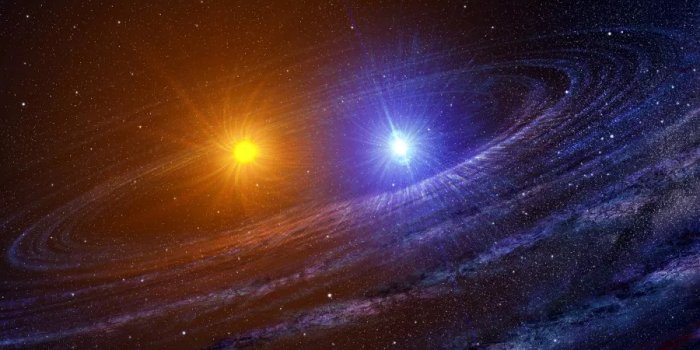MessageToEagle.com – Astronomers are now more and more certain that our Sun did have a twin, a star dubbed Nemesis, because it was supposed to have kicked an asteroid into Earth’s orbit that collided with our planet and exterminated the dinosaurs.
Recent studies show most stars have companions, including our nearest neighbor, Alpha Centauri, a triplet system.
Nemesis has never been found. What happened to our Sun’s companion? Astronomers have speculated about the origins of binary and multiple star systems for hundreds of years. Are binary and triplet star systems born that way? Did one star capture another? Do binary stars sometimes split up and become single stars?

Nemesis was not our Sun’s identical twin and it was most likely 17 times farther from the Sun than its most distant planet today, Neptune.
Several years ago, a computer simulation by Pavel Kroupa of the University of Bonn led him to conclude that all stars are born as binaries. Yet direct evidence from observations has been scarce. This can change now.
A new analysis by a theoretical physicist from UC Berkeley and a radio astronomer from the Smithsonian Astrophysical Observatory at Harvard University, suggests that our Sun’s twin most likely escaped and mixed with all the other stars in our region of the Milky Way galaxy, never to be seen again.
A radio image of a triple star system forming within a dusty disk in the Perseus molecular cloud obtained by the Atacama Large Millimeter/submillimeter Array (ALMA) in Chile. (Image: Bill Saxton, ALMA (ESO/NAOJ/NRAO), NRAO/AUI/NSF)
The new assertion is based on a radio survey of a giant molecular cloud filled with recently formed stars in the constellation Perseus, and a mathematical model that can explain the Perseus observations only if all sunlike stars are born with a companion. The Perseus molecular cloud is a stellar nursery, about 600 light-years from Earth and about 50 light-years long
“We are saying, yes, there probably was a Nemesis, a long time ago,” said co-author Steven Stahler, a UC Berkeley research astronomer.
“We ran a series of statistical models to see if we could account for the relative populations of young single stars and binaries of all separations in the Perseus molecular cloud, and the only model that could reproduce the data was one in which all stars form initially as wide binaries. These systems then either shrink or break apart within a million years.”
See also:
Did “Dark Matter” Or A Star Called Nemesis Kill The Dinosaurs?
Rare System With ‘Death Star’ Eating Planets Discovered 300 Light Years Away
“The idea that many stars form with a companion has been suggested before, but the question is: how many?” said first author Sarah Sadavoy, a NASA Hubble fellow at the Smithsonian Astrophysical Observatory.
“Based on our simple model, we say that nearly all stars form with a companion. The Perseus cloud is generally considered a typical low-mass star-forming region, but our model needs to be checked in other clouds.”
Last year, a team of astronomers completed a survey that used the Very Large Array, a collection of radio dishes in New Mexico, to look at star formation inside the Perseus molecular cloud.
The idea that all stars are born in a litter has implications beyond star formation, including the very origins of galaxies, Stahler said.
This study shows that our Sun most likely had a twin, but we haven’t been able to locate it, at least not yet.
MessageToEagle.com
Expand for references







